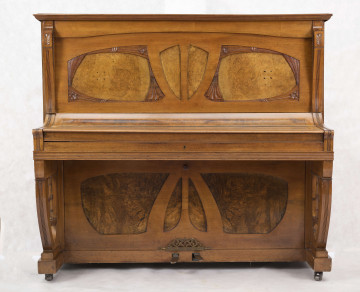
Dawid before Saul
circa 1590 — 1650
National Museum in Szczecin
Part of the collection: Historia miasta i regionu
The phonograph was the first mechanical device that could record and play sounds. It was created by Thomas Edison, who began working on it in July 1877 in his Menlo Park lab in the United States. The patent for the phonograph was granted to Edison on 15 January 1888, after which he started commercialising his invention by establishing the Edison Speaking Phonograph Company. The first phonograph was made out of a metal membrane vibrating due to sound waves, to which a stylus was attached. Said stylus was used to cut grooves in a thin lead sleeve placed on the device’s cylinder. The cylinder rotated and moved along the horizontal axis, resulting in the stylus cutting a spiral groove of varying depth, depending on the amplitude of the vibrations. This enabled the device to play the recorded sound – the tip of the needle inserted into the groove caused the same vibrations of the membrane when the cylinder was rotated. However, the lead sleeve on the cylinder did not provide high-quality sound, so Edison quickly replaced it with wax. The Łańcut phonograph has a plaque with the text of the patent on the metal top of the box, and its cylinder is covered with grooves, which show that the device was used. Joanna Kluz
Other names
unknown
Author / creator
Dimensions
height: 28 cm, width: 31 cm
Object type
History of the city and the region
Technique
installation
Material
wood, metal
Creation time / dating
Creation / finding place
Owner
Castle Museum in Łańcut
Identification number
Location / status

circa 1590 — 1650
National Museum in Szczecin

1122 p.n.e. — 256 p.n.e.
National Museum in Szczecin

National Museum in Lublin
DISCOVER this TOPIC
National Museum in Lublin
DISCOVER this PATH
Educational path